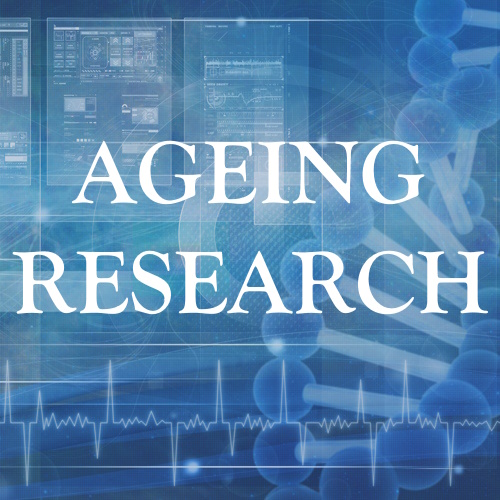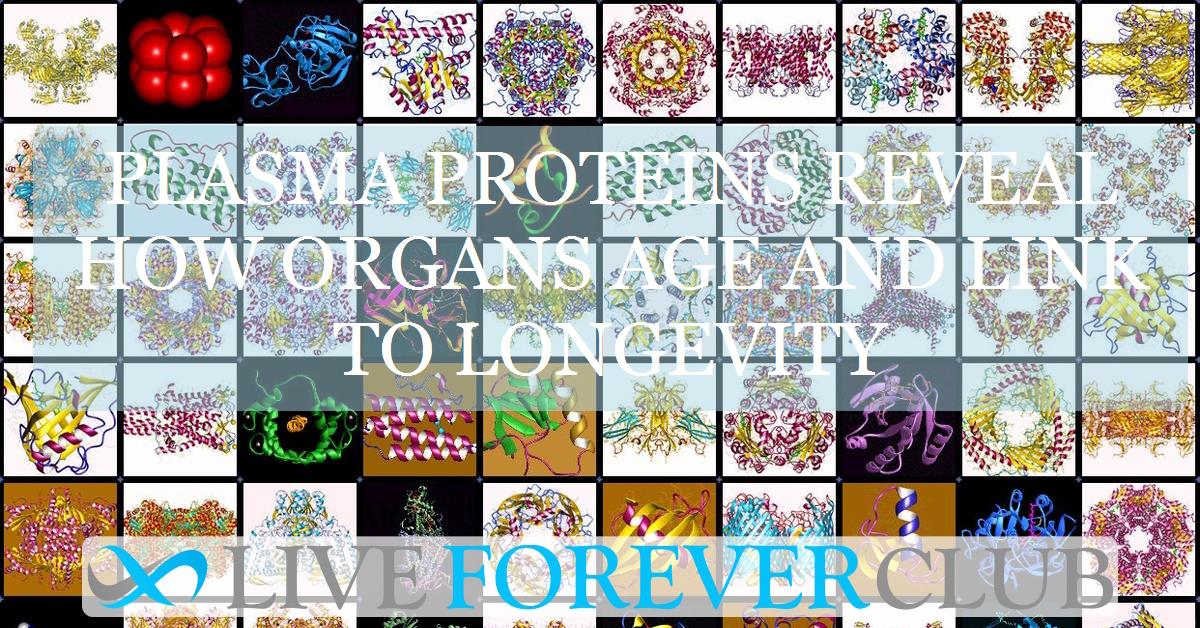Why do some people live to 100 with sharp minds, while others face chronic disease decades earlier? Ageing has always been seen as a universal, unstoppable process, yet science increasingly reveals that it does not affect every organ equally. The heart, brain, lungs, and immune system all march to different biological clocks. Understanding these clocks is one of the most pressing challenges of modern medicine, because it holds the key to predicting disease, delaying frailty, and extending healthspan.
A new study in Nature Medicine tackles this challenge with a powerful approach: plasma proteomics, the large-scale measurement of proteins circulating in our blood. Researchers at Stanford and their collaborators used data from nearly 45,000 people in the UK Biobank to estimate the biological age of 11 different organs. Their findings are striking: the biological youth of the brain and immune system is uniquely tied to longer life, while accelerated ageing of these systems sharply increases disease risk.
What Is Plasma Proteomics?
Every organ in the body releases proteins into the bloodstream. Some are hormones, like insulin from the pancreas; others are structural fragments, like neurofilament proteins from the brain. Together, these thousands of circulating proteins form a molecular fingerprint of our body’s internal state.
Plasma proteomics refers to systematically measuring these proteins and analysing them for biological patterns. In this study, the researchers examined 2,916 proteins using an advanced platform called Olink. By focusing on proteins highly enriched in specific organs, they trained machine learning models to estimate each organ’s “biological age” compared to chronological peers.
The key metric was the age gap—the difference between predicted organ age and actual age. A positive gap meant the organ was older than expected; a negative gap meant it was more youthful.
Organs Age at Different Speeds
One of the study’s first revelations was that organ ages are only weakly correlated. In other words, having an “old” kidney does not necessarily mean having an “old” brain. The average correlation across organs was just 0.21, showing strong independence.
This finding challenges the simplistic notion of “one biological age.” Instead, humans carry multiple ageing trajectories across organs, some fast and some slow. For example, the study found men tended to have older kidneys and immune systems, while women had older adipose tissue, arteries, and hearts.
Such heterogeneity implies that personalised medicine should not rely on a single ageing biomarker. Instead, clinicians may need organ-specific measures to predict disease risks accurately.
Extreme Agers: The Outliers Who Teach Us the Most
The researchers identified “extreme agers,” people whose organs looked much older or younger than expected. About one-third of participants fell into this category. Some had an unusually aged single organ, while others showed multi-organ accelerated ageing.
Multi-organ agers were more common in older individuals, suggesting that aged organs accumulate over time. Yet there were also “youthful organ” outliers whose biological ages were far below average. These outliers are especially important because they may reveal protective biological pathways that could inspire future therapies.
Organ Ageing Predicts Future Disease
To be meaningful, biological age must forecast real-world outcomes. The study tested this by tracking participants over 17 years and linking organ age gaps to incident diseases.
The associations were striking.
Heart ageing predicted atrial fibrillation and heart failure.
Kidney and pancreas ageing predicted chronic kidney disease.
Lung ageing predicted chronic obstructive pulmonary disease (COPD).
Brain ageing predicted Alzheimer’s disease.
In fact, the risk of Alzheimer’s doubled with each standard deviation increase in brain biological age. Conversely, individuals with unusually youthful brains showed dramatically reduced risk, independent of genetics.
Brain Ageing vs. Alzheimer’s Disease
One of the most dramatic findings was the link between plasma-derived brain age and Alzheimer’s risk. People with aged brains had a 3.1-fold higher risk of Alzheimer’s, comparable to carrying one copy of the APOE4 gene—the strongest known genetic risk factor.
Meanwhile, individuals with youthful brains had a 74% reduced risk, offering protection similar to carrying two copies of the rare APOE2 gene. In other words, brain age measured from plasma proteins was as powerful a predictor as the most important genetic determinants.
This is a landmark result, because it suggests that modifiable biological processes—not just fixed DNA—determine dementia risk.
Comparing Plasma and MRI Brain Ageing
Brain ageing has also been estimated through MRI scans, which measure structural shrinkage and volume loss. Interestingly, plasma-based and MRI-based brain ages correlated only weakly (r = 0.18). Each captured different aspects of brain health.
MRI detects anatomical atrophy, while plasma proteins reflect molecular changes, such as axonal breakdown (neurofilament light chain) or astrocyte reactivity (GFAP). Together, they provide a more complete picture of brain ageing than either method alone.
Proteins That Drive Brain Ageing
Which proteins mattered most? The study identified several top contributors to brain age:
Neurofilament light chain (NEFL), a marker of axon degeneration.
Myelin oligodendrocyte protein (MOG), linked to white matter health.
Glial fibrillary acidic protein (GFAP), indicating astrocyte activation.
Brevican (BCAN), part of the extracellular matrix that protects neurons.
Many of these proteins are already being tested as biomarkers in Alzheimer’s trials, further validating their relevance. Their appearance in this longevity study suggests they may also be targets for early interventions to preserve brain youth.
Immune System as a Longevity Regulator
The immune system showed a similar pattern. Youthful immune profiles were strongly protective against disease and mortality. In fact, individuals with both youthful brains and youthful immune systems had the lowest risk of death over the 17-year follow-up.
This makes biological sense. The immune system regulates inflammation, which plays a central role in ageing. Chronic low-grade inflammation—sometimes called “inflammageing”—contributes to cardiovascular disease, neurodegeneration, and frailty.
By contrast, a resilient immune system may suppress harmful inflammation, preserve tissue repair, and slow organ decline.
Accumulation of Aged Organs Increases Mortality
The researchers also asked whether ageing in multiple organs compounded risk. The answer was yes—and dramatically so.
Having 2–4 aged organs doubled mortality risk.
Having 5–7 aged organs increased risk more than fourfold.
Having 8 or more aged organs raised risk eightfold.
Over 60% of individuals with 8+ aged organs died within 15 years. These results highlight that systemic organ ageing, not just one weak link, accelerates mortality.
Lifestyle and Medications Influence Organ Ageing
A hopeful aspect of the study is that organ age estimates were sensitive to lifestyle and medication.
Smoking, alcohol, processed meat, and insomnia accelerated ageing.
Exercise, oily fish, and higher education slowed it.
Certain drugs and supplements—ibuprofen, glucosamine, cod liver oil, multivitamins, vitamin C—were associated with youthful organ profiles.
Even hormone therapy mattered: postmenopausal women taking oestrogen showed younger immune, liver, and artery profiles compared to those without treatment.
This sensitivity suggests that plasma proteomics could be used to monitor interventions in real time, giving individuals personalised feedback on how lifestyle choices affect their biological ageing.
Mortality: Why the Brain and Immune System Stand Out
When researchers compared organs, two stood apart: the brain and immune system. Youth in these systems uniquely predicted longevity, while other youthful organs offered little survival advantage.
Why? The authors speculate that the brain and immune system act as central regulators of ageing. The brain controls circadian rhythms, metabolism, and stress responses, while the immune system governs inflammation and repair. Together, they form a body-wide command centre.
This echoes findings in animals, where manipulating brain neurons or immune pathways extends lifespan. Now, similar evidence emerges in humans.
Limitations and Next Steps
No study is perfect. The authors note several caveats:
Plasma proteins may not perfectly reflect their organ of origin.
Results are mostly based on individuals of European ancestry, so findings may not generalise globally.
Cross-sectional data cannot fully capture lifelong ageing rates.
Future research should integrate longitudinal proteomics, diverse populations, and genetic data to refine these models. Still, the robustness of associations across nearly 45,000 people makes the conclusions hard to ignore.
Implications for Medicine and Longevity Science
This research could transform medicine in several ways:
Early Detection – Doctors could one day screen organ ages through a blood test to catch high-risk individuals before disease appears.
Personalised Interventions – Lifestyle or drug therapies could be tracked through shifts in organ age, providing rapid feedback.
New Drug Targets – Proteins like NEFL or GFAP may serve as therapeutic markers for slowing brain ageing.
Longevity Strategy – Preserving brain and immune youth may be more important than targeting other organs.
The Bigger Picture: Towards a Proteomic Clock of Ageing
Epigenetic clocks, based on DNA methylation, have dominated the biological ageing field. This study suggests plasma proteomics may provide a richer, organ-specific alternative. Unlike DNA methylation, which is relatively stable, proteins are dynamic and responsive to lifestyle.
This responsiveness may make proteomic clocks more useful for measuring the effects of interventions like diet, drugs, or exercise. Imagine tracking whether a new therapy keeps your brain biologically young, all through a simple blood test.
Conclusion
The study by Oh and colleagues represents a milestone in ageing research. By linking plasma proteomics to organ-specific biological age, they provide a new lens on health and longevity. The findings underscore three key messages:
Organs age independently, so a single number cannot capture true biological age.
The brain and immune system matter most, acting as central regulators of healthspan.
Lifestyle and medication can shift organ ageing, meaning interventions are possible.
As the field moves forward, proteomic measures may become standard tools for preventive medicine. In the near future, a routine blood test could not only diagnose current disease but also tell us how old our organs truly are—and how long we might stay healthy.
The secret to longevity, it seems, may already flow in our blood.
The study is published in the journal Nature Medicine. It was led by Tony Wyss-Coray from Stanford University.








